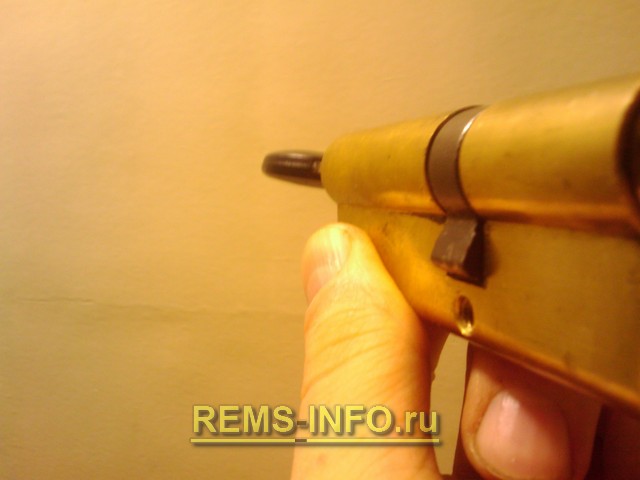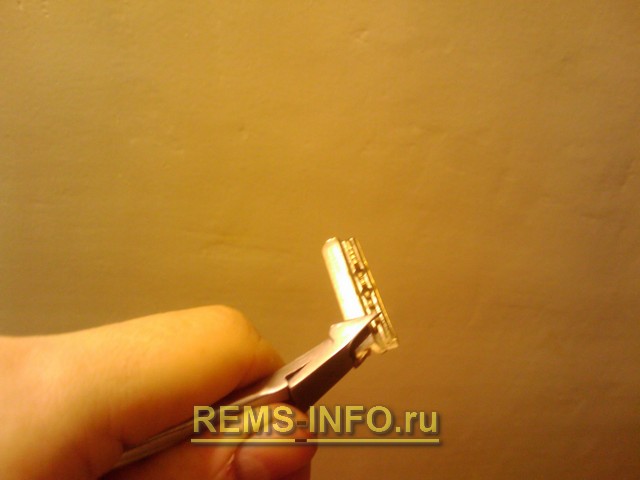How to remove a broken key from a door lock
Probably, everyone is familiar with the stories when the key does not turn in a poorly functioning lock. Often this happens due to extreme wear of the lock core, which, due to backlash caused by many years of its work, is no longer able to accept the native key as its own.
If the wear is not yet critical, with slight movements from side to side while turning the core at the same time, you can still achieve its operation. The main thing is not to overdo it with the force applied to the rotation, since the key can be turned off, thereby spoiling its position even more.
No one can give a detailed guide on how to pull a broken key out of a door lock that answers all questions, since all cases have their own nuances. This article summarizes the recommendations that will help you understand how and what you have to work in most cases.
What to do if the key is already broken?
We note right away that the information is relevant for double-sided type cores, that is, those in which the key is inserted both on one side and on the other.
In addition, access to the second side of the core is necessary, since some manipulations will need to be done there as well.
So, here is a list of the necessary tool in order to extract a broken key:
- Screwdriver. Suitable cross, type PH2 or PZ2. If there are none, a slotted one is suitable, the slot length of which is 3 millimeters.
- Wire cutters. The smaller this tool is, the better, since the slope formed on the blades of the tool increases in direct proportion with an increase in their dimensions. This means that it is much more difficult to capture a chip protruding from the core by 1 millimeter with a large tool, the blades of which are closed at a distance of 2 millimeters from the end of the tool. Small, in which this closure will be at a distance of 0.5 millimeters from the end, it is easier to act. If there are no nippers on the farm at all, cuticle nippers, widely used by women around the world, are ideal.
- The second, not broken, key to the lock. Should be on the opposite side of the damaged core.
- Needle. It may be necessary if the wire cutters come off, simultaneously pushing the chip deeper into the core.
It should be noted that the ordinary dismantling of the core will not help the owner, since this part has a simple but effective protection against ordinary disassembly. It consists in a tucked-in dog of the core, and, not being able to turn the key while removing the core, it is guaranteed that it will not be possible to extract it.

Consider the first repair option, in which the key was broken indoors. The door is open at the same time.
We disassemble the lining of the castle. To do this, unscrew 2 screws from the inside of the door, and carefully remove the decorative elements. We unscrew the protective lining of the core.
Now, having gained access directly to the core of the lock, we insert the whole key from the back side, making additional efforts to push out the chip.
The design of the core allows you to push the broken key 1.5 mm from the end of the part. Further, without taking out the whole key, you need to grab the protruding fragment with wire cutters, and securely fixing it, remove it from the lock.
Although simple, this process will take up most of the repair time, as the wire cutters can constantly slide off, while pushing the chip back to its original position in the core. If such a slip occurs, use a needle to pry off the chip and pull it back out.
If the door was closed, and there is no access to the back of the lock, you need to constantly use a needle instead of the second key to pull the chip out by the required one and a half millimeters. Otherwise, the whole process is absolutely similar to the above guide.
If, nevertheless, the key was broken outside the door in its closed state, then, having no relatives inside the apartment, the core will only have to be knocked out with a hammer.
If there are relatives inside the apartment, then all is not lost. It is necessary to disassemble the decor of the lock on the back of the door, since all the screws are located with their heads exactly there. Next, the relative should be asked to insert the key from the inside in order to push the chip out for fixation with wire cutters.
Since the person outside most likely does not have wire cutters, you should seek the help of neighbors. Having obtained the necessary tool, the fragment will be removed from the core.
If the key was broken and the door was open at the same time, then everything would be greatly simplified, since you would not have to turn to the neighbors for the missing tool.

In conclusion, we note that if there are no neighbors, or they are, but they don’t have wire cutters, you can always ask relatives to pass the tool through the window, throwing it into the flower bed in front of the house. This is the only way to get the broken key out of the lock without resorting to the services of repairmen.
